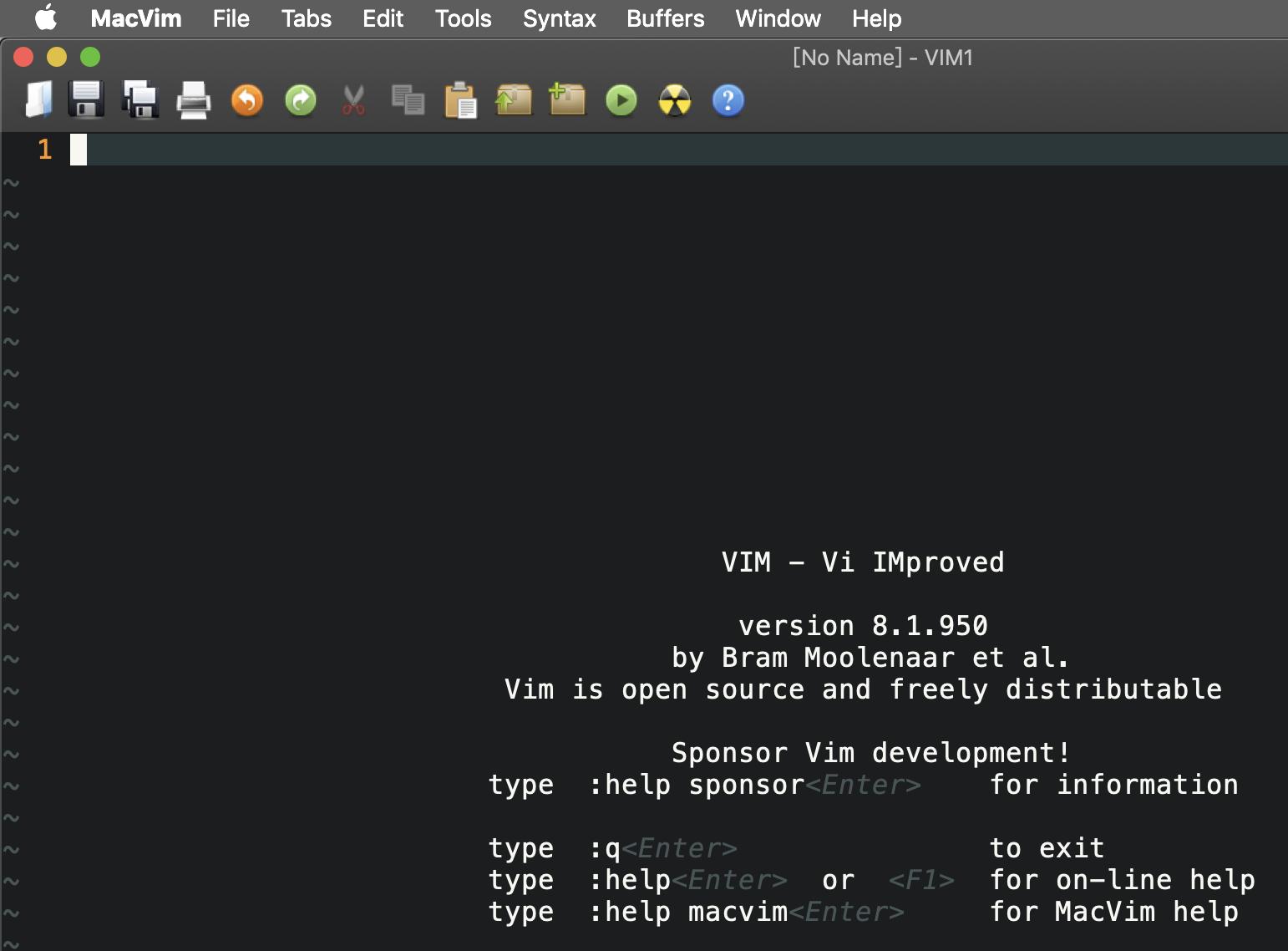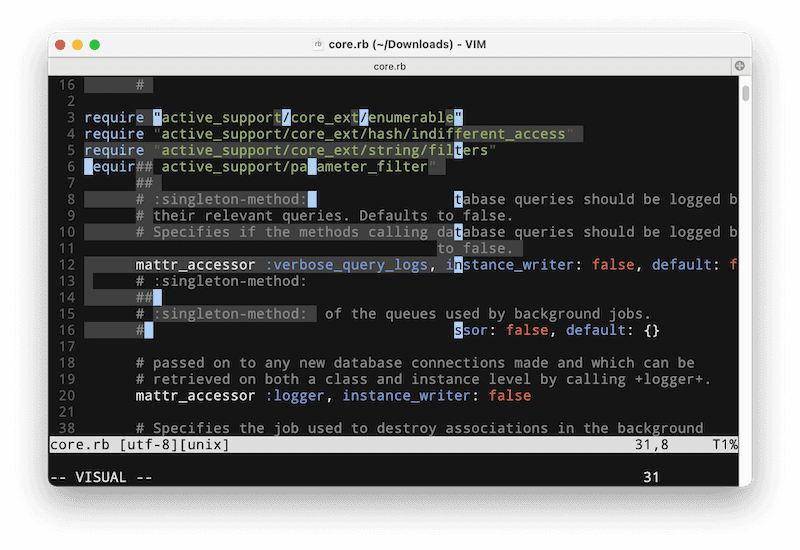
Stdinoption = false #let's see if we need to read from stdin #script currently assumes NO PARAMETERS if || ] thenįi # Last step: fire up vim. name = " ` basename " $0 " ` " gui = opts = # GUI mode, implies forking case " $name " in m * |g * |rg * ) gui = true esac # Restricted mode case " $name " in r * ) opts = " $opts -Z" esac # vimdiff and view case " $name " in *vimdiff ) opts = " $opts -dO" *view ) opts = " $opts -R" esac tabs = true Try setting the VIM_APP_DIR environment variable to the directory containing MacVim.app." exit 1īinary = " $VIM_APP_DIR /MacVim.app/Contents/MacOS/Vim" # Next, peek at the name used to invoke this script, and set options # accordingly. MyDir = " ` dirname " $0 " ` " myAppDir = " $myDir /./Applications" for i in ~/Applications ~/Applications/vim $myDir $myDir/vim $myAppDir $myAppDir/vim /Applications /Applications/vim /Applications/Utilities /Applications/Utilities/vim doĮcho "Sorry, cannot find MacVim.app. # You can short-circuit this by setting the VIM_APP_DIR environment variable # or by un-commenting and editing the following line: # VIM_APP_DIR=/Applications if then # First, check "All the Usual Suspects" for the location of the Vim.app bundle. Some mediocre hacking by Paul Kehrer Sep 30 2009). This # version is the fault of Benji Fisher, (with modifications by Nico # Weber and Bjorn Winckler, Aug 13 2007. # Based on a script by Wout Mertens and suggestions from Laurent Bihanic. If you make links to this script as view, # gvim, etc., then it will peek at the name used to call it and set options # appropriately. #!/bin/sh # This shell script passes all its arguments to the binary inside the # MacVim.app application bundle. Hopefully someone can contribute fixes to these problems! These are both irritating, but I feel the advantages outweigh the disadvantages. You (apparently) can’t pass extra parameters when using –remote-tab-silent, so tricks like mvim /etc/hosts +5 to have it open with the cursor on line 5 will not work. –remote-tab-silent doesn’t seem to work with listening on stdin, so the script always pops it out into a new window. I am not much of a bash hacker though, so there are a few caveats… 2 Additionally, it checks for args and if none are present (or just -) the script invokes stdin. To fix this I modified the script to check for an existing macvim process, and if it exists attach tabs to it.

It creates a new window (rather than a new tab) when you invoke it and it also won’t take stdin as input unless you pass a dash 1.

This is a wonderful tool, but does possess some idiosyncrasies.
VIM OR MACVIM INSTALL
NOTE: the rake command will install all dependencies needed.MacVim comes with a clever script called mvim which allows you to open files in MacVim via the command line (much like mate for TextMate). To install it, just make a clone of the repository with the git client: git clone Maximum Awesome it's a collection of vim configuration and plugins, like a configuration manager for the vim environment.

VIM OR MACVIM UPDATE
To update the vimrc scripts, run: cd ~/.vim_runtime & git pull -rebase & cd. To install the basic version, run: sh ~/.vim_runtime/install_basic_vimrc.sh To install the complete version, run: sh ~/.vim_runtime/install_awesome_vimrc.sh
VIM OR MACVIM DOWNLOAD
Now, download the vimrc files: git clone ~/.vim_runtime If you need install it, use home brew: brew install git To download the The Ultimate vimrc, you need to install the git client. The Ultimate vimrc it's a collection of vimrc configurations to make easy the usage of vim. To install the latest version, use homebrew: brew install vim It is included as "vi" with most UNIX systems and with Apple OS X. Vim is a highly configurable text editor built to make creating and changing any kind of text very efficient.


 0 kommentar(er)
0 kommentar(er)
